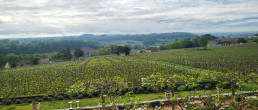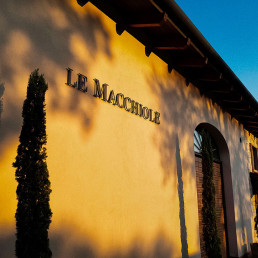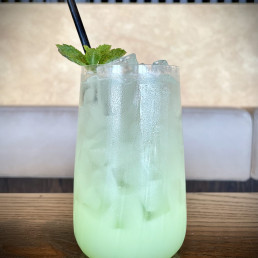He’s at it again –Puneet just can’t help himself! Ferreting out fabulous grands vins for our tasting pleasure. Dhall & Nash founder, Puneet, is our resident self-confessed Bordeaux obsessionist, and since his last trip to Bordeaux En Primeur 2022, has been hard at work tasting, sourcing, selecting!
Puneet has strident selection criteria – what he looks for is multifaceted but could be summed up as: conscientious farming with top tier winemaking, refined elegance in its peak drinking period, and yet still have lots of juice in the tank for additional cellaring. Then finished off with a cheeky “wow” factor like a super value price.
Well folks, these new “baby Bordeaux” check off every box with aplomb. And the best news is that the incredibly great value means you can buy it by the case and enjoy some now and over the following years.
It doesn’t matter how many Bordeaux gems we land: each one generates the same amount of excitement and, yes, awe. We are awed by the exceptional, consistent, age-worthy wine we can acquire from Bordeaux and get to market in an “en pointe” price range. Bordeaux is simply unparalleled in this regard. But It is also true that Puneet had to kiss a lot of frogs (aka taste a lot of average wine!) before finding something that hits all the notes like these – D&N’s new discoveries of pitch perfect gems.
The truth of Bordeaux is that there aren’t many small family domaines left. This is, after all, blue chip wine real estate and it’s seen decades of international investment and consolidation. But thanks to Puneet’s acumen & on the ground knowledge, D&N has found these quiet achievers who could easily fly under the radar until now…enjoy!
We’ve done our job to find the cheeky outliers – Châteaux that are exceptional, small, family owned, quality-through-the-roof special.
Your job is to call us – then drink up!
Château Sénéjac AOC (Haut Medoc)
Is one of the better-known Crus Bourgeois of the region, located close to the vineyards of Margaux. Historically the Left Bank Haut-Medoc has been the most important district over the last two centuries. The Médoc commune of Le Pian has similar gravelly soils to Margaux, which are well suited to Cabernet Sauvignon and Merlot. Cabernet Franc and Petit Verdot are also grown.
History – Château Sénéjac has a long history in the Medoc. While the property dates back to the 1500s, vines were not planted for a few hundred years until some point in the 18th century. The estate remained in the hands of the same family for close to two centuries. Several owners succeeded one another at the helm of the vineyard until 1860, the year it was acquired by the Count of Guigné, whose family remained the owners for 139 years.
By the mid-19th century, the Sénéjac vineyard was already producing the equivalent of 100,000 bottles per year. In 1999, Charles de Guigné sold Château Sénéjac to Lorraine Cordier, who also owned Château Talbot, a Grand Cru Classé in Saint-Julien. The vineyard was given a new lease of life, bringing it up to par with the best Médoc wines.
Since 2011, following the death of Lorraine Cordier, her nieces Philippine and Marguerite and her nephew Gustave have taken over the family property, supported by Lorraine’s sister Nancy Bignon-Cordier and her husband.
Their Philosophy – Passing on the vine to future generations – Integrating the environment as one of the performance parameters of Château Sénéjac means meeting the societal expectations of today and the years to come. They, like their customers, are increasingly aware of the fragility of the environment. It is therefore part of their vision to pass on a preserved and clean earth to the next generations. With this motivation, they have committed to a collective approach with the implementation of an environmental management system (EMS) based on the international standard ISO 14001. They have been rewarded by receiving the High Environmental Value level 3 certification in July 2018 and the ISO 14001 certification as part of the first association for environmental management in Bordeaux in July 2019.
Vins – The wines – Haut-Médoc are characterized by a deep, almost black colour in their younger years. The very expressive nose exudes aromas of black fruits and spices. On the palate, Sénéjac presents a lot of breadth and intensity while remaining smooth and balanced thanks to the finesse of its tannins. Sénéjac wines are charming and elegant, to be drunk young for their fullness and fruit or better still to age gently to rediscover the character of their terroir.
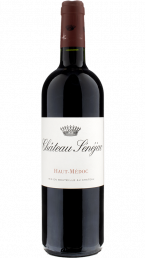
2020 Château Sénéjac AOC Haute Medoc
- The 2020 vintage resulted in high quality and powerful wines, it has all the finesse and elegance that will impress. A beautiful blend of 51% Cabernet Sauvignon, 37% Merlot, 8% Cabernet Franc and 4% Petit Verdot.
- 91/100 Jeff Leve – The Wine Insider – Cherries, currants and cocoa are on the nose and also in the core of this wine. Medium-bodied, soft and vibrant, with a touch of chalk and oak that comes through in the mid-palate and in the fruit-filled endnote. You can open and enjoy this with pleasure on release, with give it a bit of age as well. Drink from 2024-2038
Château Latour-Martillac (Pessac-Léognan)
is a wine estate in the Pessac-Léognan appellation in the north of Bordeaux’s Graves wine region, just south of Bordeaux city and on the Left-Bank of the Garonne River. The estate makes Cabernet Sauvignon-dominant red blends as well as a dry white wine led by Sémillon.
Latour-Martillac was named a classed growth in the 1953 Classification of Graves and is one of only 6 producers to hold the classification for both its red and white wines.
History – The estate takes its name from the tower which stands in the main courtyard of the château; it is the remnant of a fort built in the 12th century by the ancestors of Montesquieu. The stones of the fort were used to build the existing château at the end of the 18th century.
In 1871, the estate attracted the attention of Edouard Kressmann who had just founded his wine merchant business in Bordeaux. He was enamoured by the quality of the white wines grown on a remarkable gravelly hilltop with outstanding exposure. To this day one can still find in the plot grafted in 1884, the entire collection of Edouard Kressmann’s selection of grape varieties for his prestigious ‘Grave Monopole Dry’.
Alfred Kressmann, eldest son of Edouard, acquired the property in 1930. He changed the name: to avoid confusion with its illustrious namesake in the Medoc: Château Latour became Château LaTour-Martillac. Following the Second WW reconstruction continued by Jean Kressmann, who succeeded his father in 1954. Jean was a passionate and skilled winemaker who finally achieved the family dream to acquire the gravel slope which separated the property from the village. Thus, the vineyard was extended to nearly 30 hectares.
Today, the 6 children of Jean Kressmann own the domain and continue on the family tradition. Tristan and Loïc, the two younger sons, manage the estate with the assistance of the best wine consultants in Bordeaux. With each following vintage they produce the best from this authentic Graves soil.
Their Philosophy – Respectful Vineyard Practices are the norm at Château Latour-Martillac. From the winter pruning all the way through to the harvest, the vineyard is treated with due care and attention. Loïc Kressmann and the Vineyard Manager, Denis Wendling have put in place a comprehensive and integrated viticulture practice that is respectful of the environment. Ploughing with horses has replaced the need for herbicides.
A green philosophy is reverently practised. The removal of wood shards, leaf thinning and green harvesting feature among some of the preventative measures in limiting the use of anti-botrytis treatments. Their Winemaker, Valerie Vialard fully appreciates the responsibility of this legacy. Under her direction, the teams carry out very careful work from harvesting to the bottling of the wines.
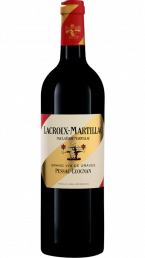
2018 Chateau Latour Martillac Lacroix-Martillac
- 91/100 Wine Enthusiast The power of this wine gives a solid texture and dark black fruits. It has spice and touches of pepper from the wine’s alcohol. To balance, the wine has fine acidity and final black-currant flavors. Drink from 2022.
- The Unique Label – At the beginning of the 1930’s, Alfred Kressmann and his son Jean – both with remarkable artistic talents designed a label for their new vintage. It was inspired by the Art Deco movement which was very in vogue at that time and created the famous design « gold and sandy stripes » which proudly adorns the bottles to this day
Château Saintayme AOC Saint-Émilion Grand Cru
Saintayme is an ‘insider’s secret’ wine. It is a true Right Bank gem. Owned and worked by Bordeaux legend Denis Durantou of L’Eglise Clinet fame from 1985 until his untimely death in 2020. He was a true “winemaker’s winemaker,” and had shrewd observations about Bordeaux.
He brought his extraordinary talents both to the vineyard and into the winery specializing in and crafting exquisite and multidimensional expressions of Merlot. But perhaps the most refreshing part about Denis Durantou was his humility and stubborn desire to keep the pricing of his wines fair. In a region home to some of the most exorbitantly priced wines in the world, this sense of authenticity was truly refreshing and admired by all who knew him.
The Legacy – Merlot was his forté and his passion. After purchasing the estate in 1985, he called it ‘Saintayme’ as a homage to the nickname many people use for the Saint-Émilion appellation. Neighbouring the prestigious properties of Château Valandraud and Château Fleur Cardinale, the property itself is located within the Saint Etienne de Lisse commune where the climate is markedly cooler than the rest of the region.
This Saint-Émilion Grand Cru property is a part of a 9 hectare vineyard planted with almost 100% Merlot and a small portion of Cabernet Franc. The terroir here is limestone, clay and gravel – very similar to some of the top vineyards in Saint-Émilion.
Durantou has left his great legacy in the hands of Alix, Noemie and Constance, his three daughters, who are assisted by Olivier Gautrat who has worked with the family for the past 20 years.
Alongside the same technical team that makes the wine of Denis Durantou’s flagship property, L’Eglise Clinet, they diligently tend to the vines at Saintayme and craft the wine at this estate. For those unfamiliar with L’Eglise Clinet, the estate is one of the jewels of Pomerol, with grand vin that is comparable in quality to the giants within the appellation.
Vin –This red wine clearly focuses on one grape variety, namely Merlot. Only flawless grapes were used for this wonderfully powerful single-varietal wine from Château Saintayme. The Saint-Emilion Grand Cru is an Old World wine in the best sense of the word, as this wine exudes an extraordinary charm that clearly underlines the success of wines from the Old World.
After being harvested by hand, the grapes are transported to the press house as quickly as possible. Here they are sorted and carefully crushed. Château Saintayme is vinified in stainless steel tanks, where it also undergoes malolactic fermentation. This is because, according to Durantou, this method allows for better yeast and temperature control. After this, 30% of Château Saintayme will spend an average of 14 months aging in new French oak barrels. But that’s not all. The best bit? Its great aging potential, which makes it tremendously interesting after only 3 to 4 years.
Saintayme’s luscious black fruit qualities and plenty of floral aromas has seen the critics scores on the rise for this hidden treasure of a property. The wine overdelivers and despite Denis’ passing, Saintayme is still a wonderful part of his legacy. In short: Château Saintayme is a great wine, the work of a master, at a great price.
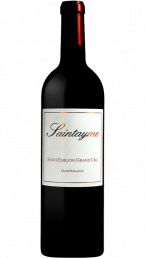
2017 Château Saintayme AOC Saint-Émilion Grand Cru
- 92/100 JAMES SUCKLING – Ripe fruit with chocolate, spice and hints of raisins. Full body, round and juicy tannins and a flavourful finish. Really delicious.
- 90/100 THE WINE ADVOCATE – Medium to deep garnet-purple in color, the 2017 Saintayme delivers expressive black cherries, mulberries and boysenberries scents with hints of rosehip tea, tilled soil and spice box. Medium-bodied, the palate has plenty of juicy red and black fruits with a plush texture and refreshing finish. Drink 2020 – 2032
Château Pédesclaux
Set in the famous left bank Pauillac appellation, the Château Pédesclaux estate was classified as a fifth growth, or cinquième cru, in the Bordeaux Classification of 1855 – a status it holds to this day. Its modern era renaissance began from 2009 when the Lorenzetti family bought the estate with the intention to further exalt its standing in this revered terroir.
History – Pédesclaux was established in 1810 by wine broker Pierre Urbain Pédesclaux and has changed hands numerous times. The estate was bought by Lucien Jugla in 1950 (Jugla had run the property for 20 years previously) and remained in the extended Jugla family until the turn of the century.
In 2009 the estate was purchased by Franco-Swiss real estate mogul Jacky Lorenzetti. Lorenzetti had purchased the 46-hectare (113 acre) Saint-Estèphe property Château Lilian Ladouys the year before.
Lorenzetti began a programme of renovation and acquisition of further high quality vineyard land, almost doubling the size of the estate from 26 hectares (69 acres) to 48 hectares (118 acres). In 2013, Lorenzetti acquired half of Château d’Issan, a well-known third growth, in Margaux run by Emmanuel Cruse, already general director of Lorenzetti’s other Bordeaux properties. And now their daughter Manon Lorenzetti has joined the family enterprise. She is driven by the same passion as her parents and who has grown up with wine production as a way of life.
Vision – Under the visionary direction of the Lorenzetti family, Château Pédesclaux continues a spectacular metamorphosis. In their determination to breathe new life into their storied Estate, in 2014 the Lorenzettis engaged celebrated architect Jean-Michel Wilmotte to provide a 21st century pure and unpretentious architectural solution to incorporate the aesthetic of transparency to define the property.
The crowning glory was a revolutionary new gravity-fed winery – the cutting edge of technology. Each plot is vinified independently, in 116 double-height stainless-steel tronconic vats that allow the batches to be kept separate, so that each individual terroir achieves its fullest expression. This is where the essence of the Pédesclaux terroir is ‘translated’.
Philosophy – At Pédesclaux, the vineyards are farmed organically or, in the case of certain plots, biodynamically. Respect for the land and for the environment have been at the heart of the Lorenzetti’s approach to viticulture. Once they had restructured the vineyards and acquired several high-quality plots, they introduced exacting and sustainable farming methods to improve the land.
The estate is now entirely committed to sustainable viticulture that respects the environment and plays the long game, nurturing the microbial life of the soils and giving special consideration to mycorrhization. This way of working is made even more successful by plot rotation, where each patch of soil spends time under grass, and by the use of compost or even green manure. Massal selection helps to preserve the genetic diversity of the vineyards, as well as protecting their unique character.
Vin – Unveiling Fleur de Pédesclaux
Without a doubt, Château Pédesclaux crafts exceptional wines. But beyond the grandeur of their grand vin (first wine), they offer a hidden gem: Fleur de Pédesclaux, their remarkable second wine truly shines. Fleur de Pédesclaux is a unique expression of Pauillac. Unlike the typical Cabernet Sauvignon dominance of the region, Fleur de Pédesclaux leans heavily on Merlot. This unique composition reveals its Pauillac pedigree actually has a Merlot heart, a variety known for its approachability, elegance, and fruit-forward charm.
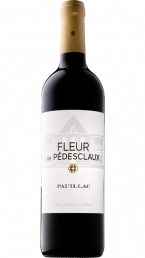
2020 Château Pédesclaux Fleur de Pédesclaux AOC
Ethereal, fresh, appealing to both the nose and the palate, Pédesclaux’s second wine is a flower that unfurls as you approach. Thanks to its reliance on a high proportion of Merlot, the wine is soft and gentle, with a delicious, silky texture. It has intense, compelling and savoury fruit aromas and, year after year, beautifully calibrated scents of white flowers, violets and small red berries. Exhibiting a more high-spirited elegance yet nonetheless showing remarkable length, Fleur de Pédesclaux is a delight. In the mouth, it is fresh, subtle, packed with fruit and beautifully smooth tannins, with a long finish. In this more floral expression, the marvellous complexity of our terroir is once again evident, but in a mouth-watering style that is instantly festive. (Website)
- 90/100 The Wine Cellar Insider Medium-bodied, fresh, bright, crisp. crunchy, chewy red fruits with a touch of bitter cocoa on the backend that is perfect for ordering in a cafe or bistro, and it is clearly ready to go on release. Drink from 2023-2032.
- 91/100 Falstaff Intense ruby, purple reflections, a slight brightening on the rim. Subtle floral notes, rose petals, cassis and liquorice, some nougat and cherries, fresh orange zest. Medium-bodied, red cherries, a fresh acidity, with mineral and citrus notes on the finish, already ready to drink.
- 91/100 Jeb Dunnuck Attractive black and blue fruits, chocolate, graphite, and a kiss of minerality emerge from the 2020 Fleur De Pédesclaux, which is the second wine of Château Pédesclaux. A balanced, medium-bodied effort, it has ripe tannins and rock-solid concentration, especially for a second wine. tilled soil and spice box. Medium-bodied, the palate has plenty of juicy red and black fruits with a plush texture and refreshing finish. Drink 2020 – 2032.
“The strength of Pédesclaux lies in the diversity of its parcels in different environments. For us that is an enormous asset because it allows us to tailor each vintage according to the potential quality of each zone” Eric Boissenot, Oenologist Consultant
You know this is truly authentic, old-school excellence – Bordeaux that will make any wine lover smile.
As we’re about to brave the cold, dark months of winter, what better way to keep one’s spirits buoyant than revelling in the splendour of D&N’s new Bordeaux beauties.
We’ve done our job to find the cheeky outliers – Châteaux that are exceptional, small, family owned, quality-through-the-roof special.
Your job is to call us – then drink up!
